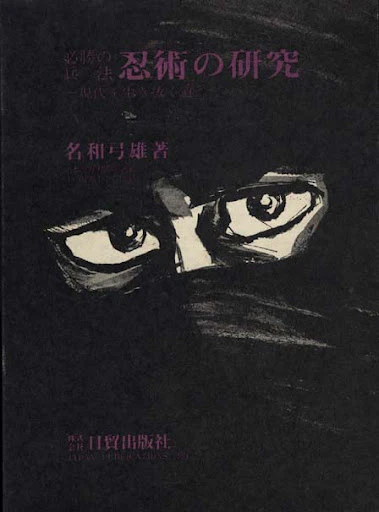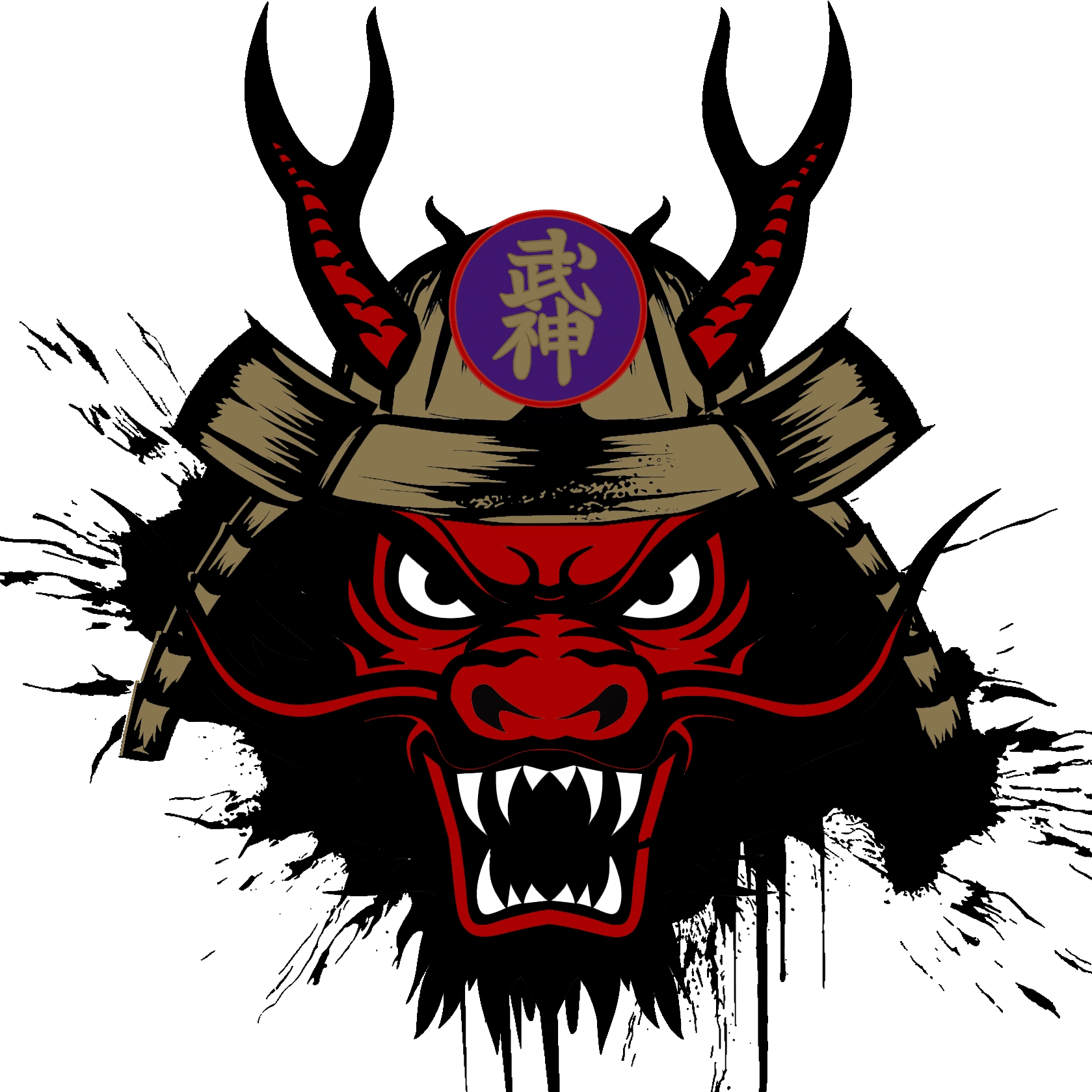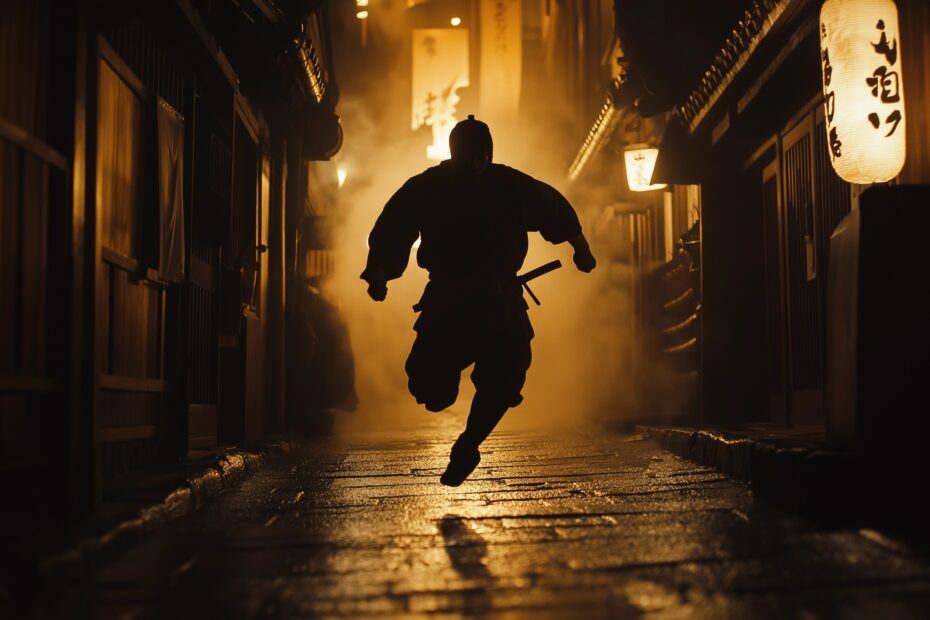Ninja Running Techniques, the importance of running for ninja is evident from the escape story of Nikuruma Inosuke, as mentioned earlier. Terms like “swift-footed” or “fast-footed group” are entirely fitting for ninja.
横走り Yoko-bashiri (Side Running)
A distinctive ninja running technique is side running. With their back against a wall, holding a sword facing forward toward an enemy, ninja run sideways. This method is ideal for navigating narrow spaces, such as those only chest-width wide.
The legs cross deeply in a zigzag pattern, then spread wide to the right or left in a large X-shape, repeating to move sideways, either running or hopping. In side running, even cutting through the wind, the mouth avoids air resistance, and there’s no worry of dust entering the eyes. One can eat, shout to communicate with allies, or even urinate while running. Once mastered, side running is said to be far more convenient than normal running.
斜め走り Naname-bashiri (Diagonal Running)
When ascending steep slopes, running straight up is less efficient than running diagonally. Zigzagging by running diagonally right, then diagonally left, is easier and helps evade enemy gunfire or arrows. Slightly lowering the face during diagonal running reduces air resistance at the mouth. Arm movement is crucial: crossing both arms broadly in front of the chest and swinging them wide imparts momentum, propelling the legs diagonally as if leaping, increasing speed and reducing fatigue.
後ろ走り Ushiro-bashiro (Backward Running)
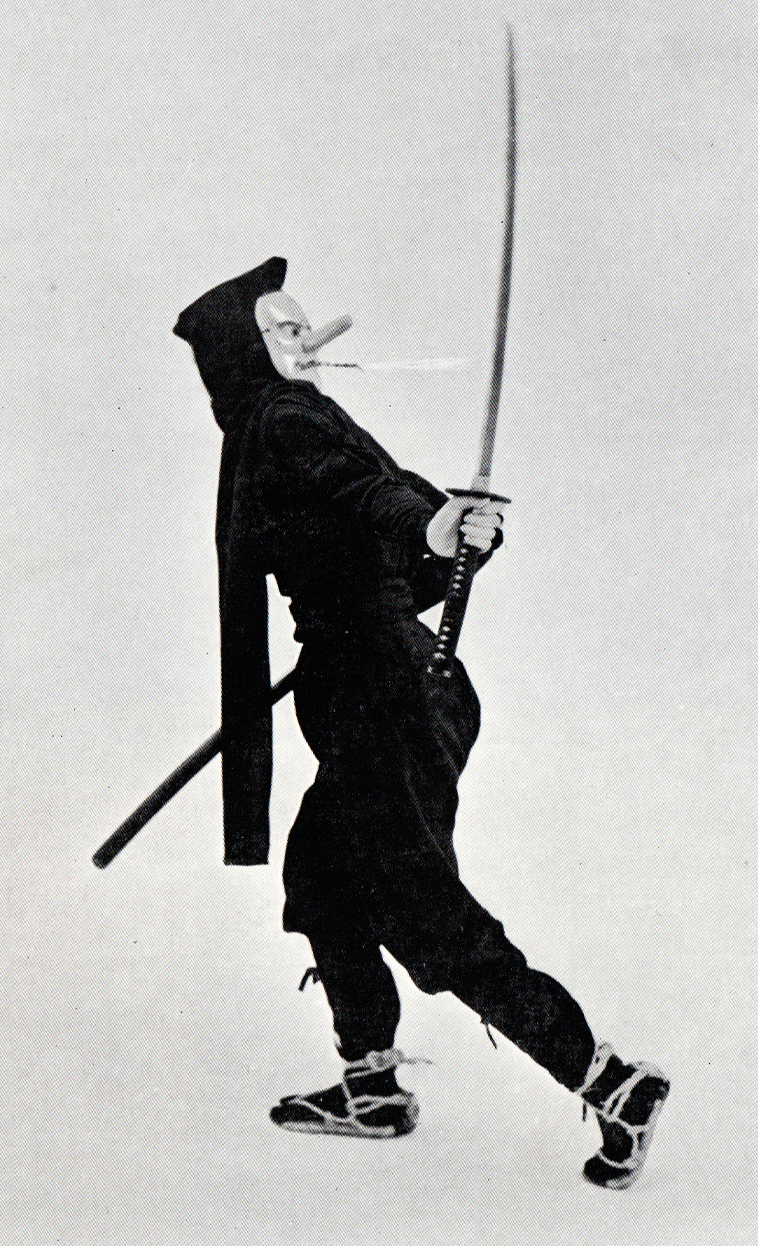
While backward walking is possible, backward running is slow, and the terrain ahead is hard to see, making it frightening and impractical. I believe backward running is a ninja trick.
Experiments in dim light show most people fail to notice this ruse, supporting my hypothesis. Backward running is used when pursued and at risk of being cut down from behind. The ninja turns to face the approaching enemy, holding the sword in a seigan (eye-level) stance or spewing fire and smoke from the mouth, then flees backward at high speed while maintaining this posture (see frontispiece illustration).
During infiltration, ninja carry a demon or tengu mask preloaded with fireworks in their chest. When pursued closely, they ignite the firework’s fuse, place the mask on the back of their head, and, while holding the sword backward, run forward. To the enemy, it appears the ninja is retreating backward while facing them with a sword. As noted in the attire section, sandals must have heel-stop fittings.
暗闇を疾走する法 Kurayami o Shissō suru Hō (The Method of Running Swiftly Through Darkness)
The infamous “Sermon Bandit” from Taisho-era crime history, who broke into homes, assaulted women, stole valuables, and stayed from midnight to dawn, offers a relevant example. He preached to households, advising them to brighten the outside and darken the inside for safety or to keep dogs, biding time until just before the first train, then fleeing at high speed through the dark, breaking through police cordons before they tightened, escaping beyond their reach. His knack for sprinting through darkness kept him elusive. This ninja-like figure, Tsumaki Matsukichi, claimed to be from the mountains.
When captured and asked how he ran through darkness, Tsumaki Matsukichi’s response mirrored ninja techniques, prompting me to ponder the connection between mountain life and ninjutsu. He explained: Holding a bamboo sword or long bamboo staff straight ahead horizontally, he lowered his face (since the dark obscured vision) and ran. When hitting a wall or obstacle, he bent his arm to absorb the impact, changed direction, and continued running in the same posture. The bamboo acted as an antenna.
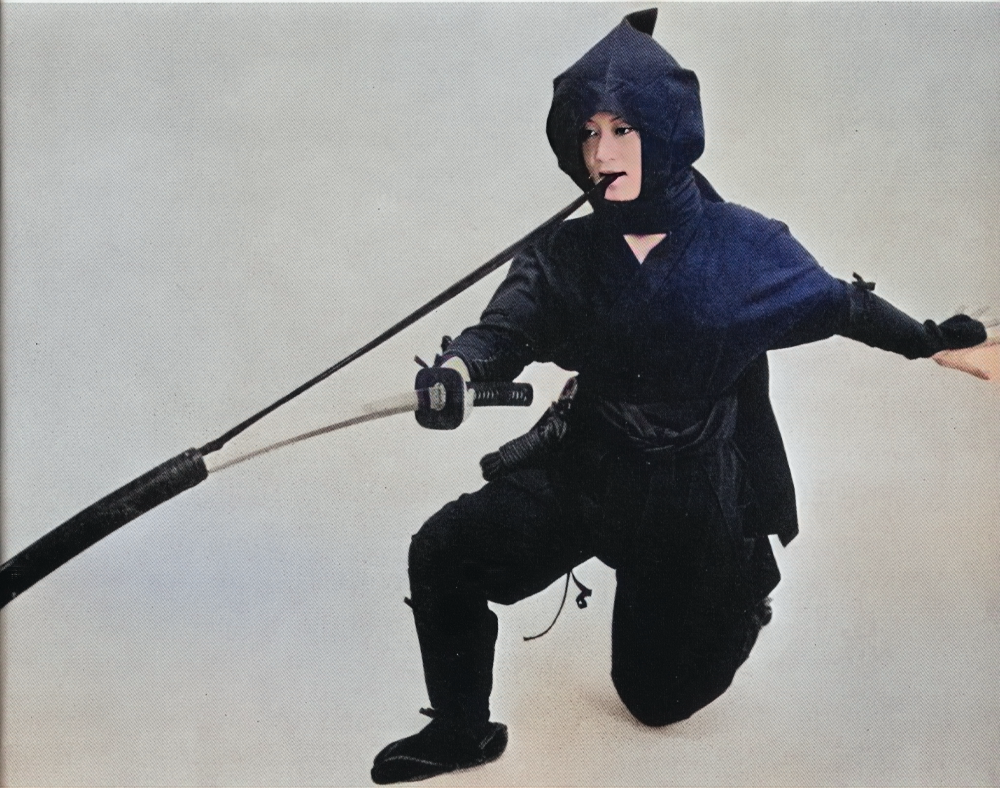
座さがしの術 Za Sagashi no Jutsu
Ninja used the same principle to sprint through dark paths, but instead of a bamboo sword or staff, they employed the Zasaguri no Jutsu (probing technique) from the seven sageo arts. Holding the sword and scabbard horizontally forward, with the sageo’s end in their mouth to suspend the sword, they lowered their face and ran. When the scabbard’s tip hit an obstacle, it snapped back onto the blade, cushioning the impact as the scabbard slid. Ninja swords had sturdy iron kojiri (end caps), a reinforcing band, a ring-shaped kurigata (cord loop), and a robust koguchi (scabbard mouth) fitting, making scabbard damage highly unlikely.
This above about Ninja Running techniques was just one section translated from Japanese to English from the book…
忍術の研究 Ninjutsu no Kenkyū by 名和弓推 Yumio Nawa
First published on November 1, 1972. It contains approximately 85,000 words across 377 pages, including around 50 pages of illustrations and index. The work explores historical ninjutsu, martial strategies, and their relevance to contemporary life.
About the Author
Yumio Nawa (real name: Sadatoshi Nawa) was born in 1912 (Meiji 45) into a samurai family of the Ogaki-Toda domain. He was the Sōke (headmaster) of Masaki-ryū Manrikigusari-jutsu and Edo Machikata Jitte-jutsu. His other works include A History of Torture and Punishment, Studies of Jitte and Hojō, and Weapons of the Shinobi, among others. He served as an executive director of the Society for the Research and Preservation of Japanese Armor and Arms, and a standing director of the Japan Writers Club. At the time of publication, he resided in Asagaya-Minami, Suginami Ward, Tokyo.
